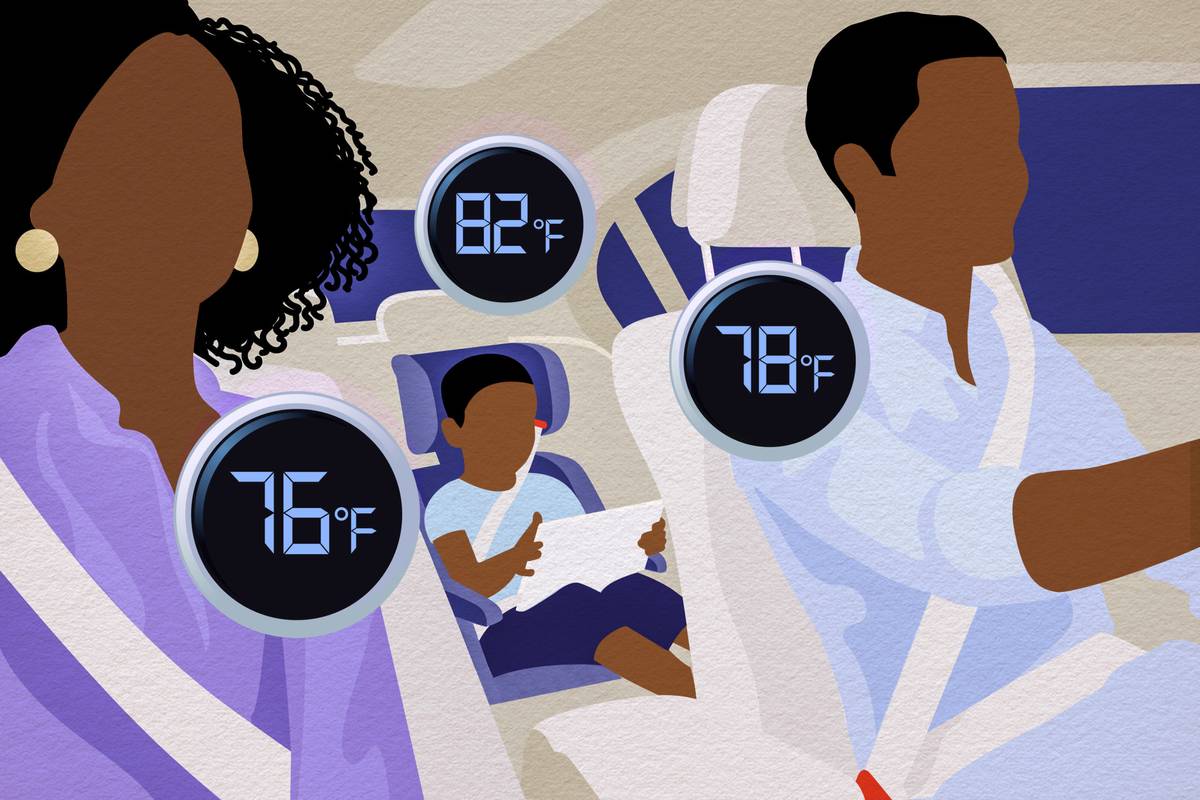What Is Dual-Zone Climate Control?

Dual-zone climate control is a system that allows the vehicle’s front-seat passengers to set their own preferred temperature for their “zone,” or their area of the front cabin. It’s a smarter, more personalized version of basic automatic climate control systems that let you set a single temperature for the whole cabin.
Related: Crank It or Leave It? We Tested Auto Climate Control to Find Out
Such automatic systems use an array of sensors to monitor the temperatures inside and outside the car, humidity, and other factors such as air quality and sunlight, depending on the sophistication of the system. The system’s computer then coordinates the heating, ventilation, air conditioning and blower speeds to maintain the temperature you set without additional input from you. It controls the temperature and humidity of the air with motorized “blend doors” — dampers in the system located behind the dashboard that balance air flow through the heating and cooling sections. The dual-zone system has additional sensors specific to each area of the car’s cabin and more dampers to vary the temperature for each zone.
Smarter and Less Distracting
An electronically controlled system is significantly more complicated than manual heating and air conditioning that requires you to fiddle with temperature and fan controls, as well as the cabin vents, to keep the cabin comfortable over the course of a drive. Manual climate control systems now are standard on even the cheapest new vehicles, in part because — in the quest for higher mileage ratings — the better aerodynamics of closed windows trump any load from the climate control system.
But “set-and-forget” automatic climate control systems, including the fancier dual-zone systems, have been migrating down to cheaper vehicles as standard or optional equipment; their promise is greater comfort and less driver distraction. To get zoned automatic climate control, however, you frequently must opt for an option package or a higher trim level. Also, adding complexity and more parts to the system can increase repair costs down the road.
Why Stop at Two Zones? How About Three or Four?
Automatic climate control systems with additional zones behind the front row are proliferating — primarily with larger vehicles, such as SUVs and vans, and luxury cars. These three- or four-zone systems add separate controls, often at the rear of the center console, and additional air vents on the console, in the B-pillar between the front and rear doors, in the roof and elsewhere. They provide a separate, mini climate for the second or third row in three-zone systems, commonly found in SUVs or vans; for the four-zone systems offered mostly in high-end vehicles, there’s a separate zone for each side of the backseat.
A few systems, such as the Climate Concierge setting in some Lexus vehicles, even integrate the automatic multizone climate control with additional automatic control of the heated and ventilated seats and heated steering wheel; it also includes an air purifier. These systems add sensors in the seats and even infrared sensors to monitor the surface temperature of the occupants.
Is Dual-Zone (or More) Climate Control Worth It?
Some people don’t use automatic climate control even if they have it and prefer to control the climate control system manually. The option of two or more zones won’t change that.
But if that’s not you, the value depends on your expectations. There is only so much climate difference the zoned system can make in an open box of 100 cubic feet, give or take. Even less in, say, a Mazda MX-5 Miata. The zones will blend into an ambient temperature, typically with a difference of a few degrees among zones. And as with most features, some vehicles do it better than others.
That said, with most multizone systems, there is a more noticeable temperature differential in the air as it comes out of the vents toward the occupant. This alone can be a relationship-saver on a long drive with a partner that has very different comfort preferences; ditto for kids in the back. My personal experience is that zoned controls also are very helpful on a drive where one person is getting direct sun and another is in the shade. And if the vehicle also has heated and ventilated seats, they can help widen the comfort differential between zones.
More From Cars.com:
- Which Cars Have Cooled Seats?
- Heated and Cooled Cupholders Put to the Test
- What’s a Cabin Air Filter and When Should You Replace It?
- What Causes the Air Conditioning Fan to Slow Down?
- Air-Conditioner Condenser: What You Need to Know
- Common Heating and Air Conditioning Problems
Related Video:
Cars.com’s Editorial department is your source for automotive news and reviews. In line with Cars.com’s long-standing ethics policy, editors and reviewers don’t accept gifts or free trips from automakers. The Editorial department is independent of Cars.com’s advertising, sales and sponsored content departments.
Featured stories




